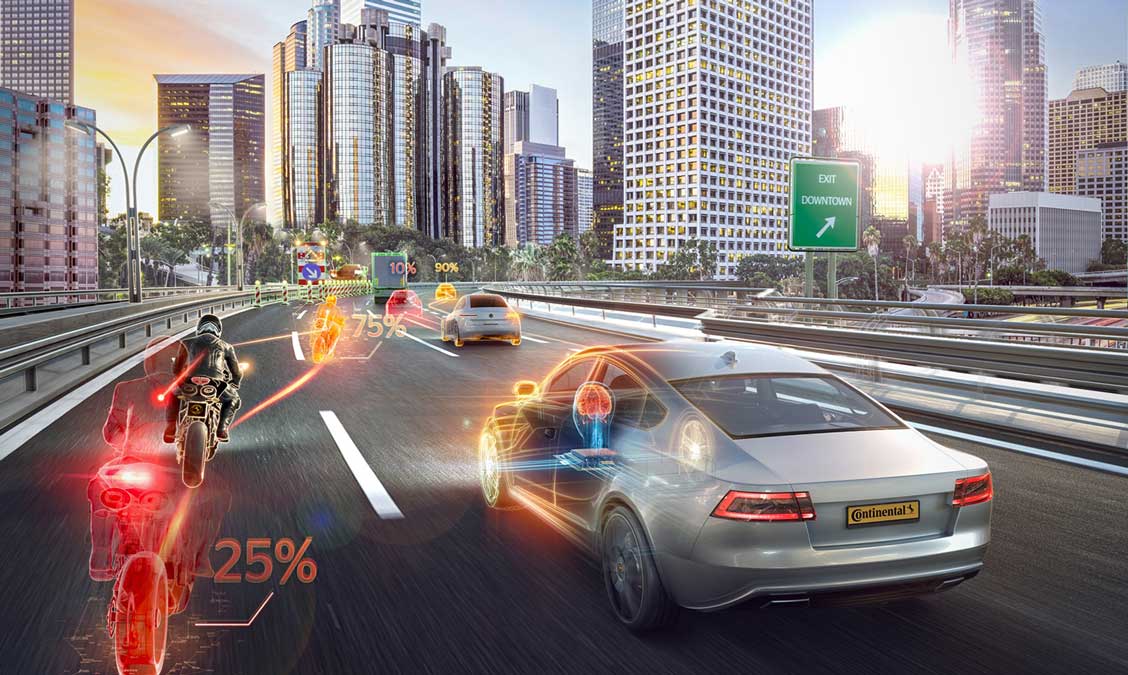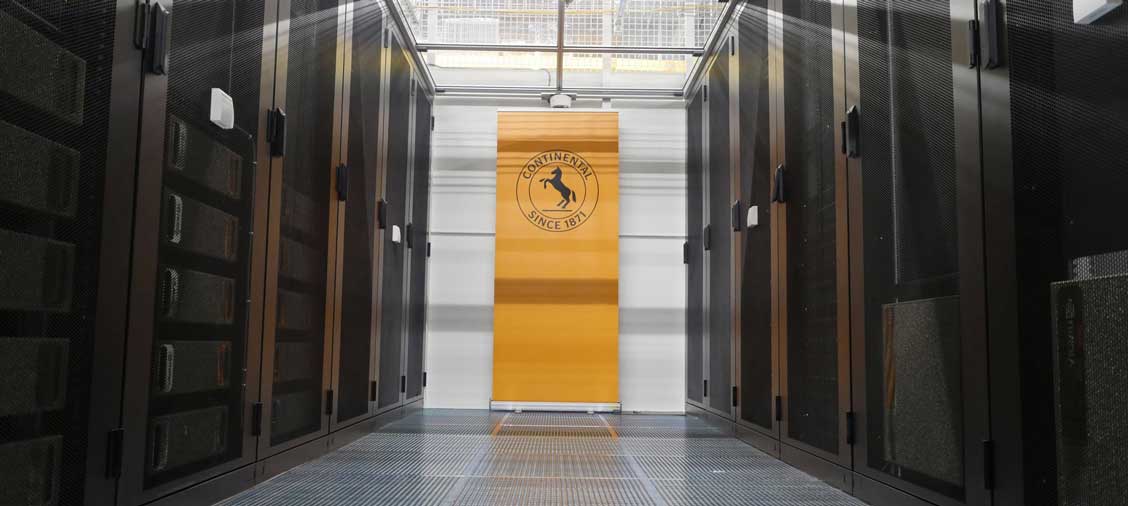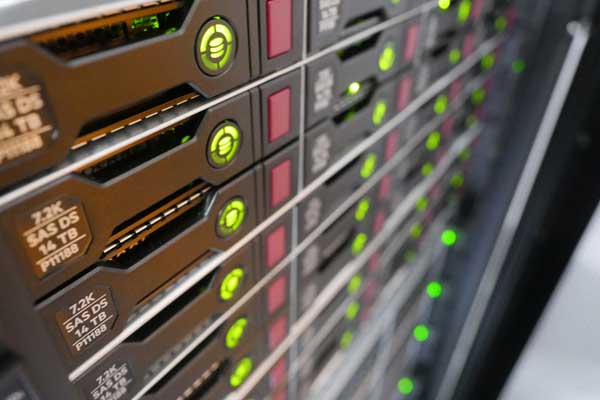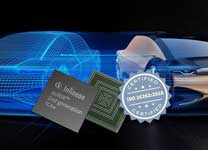Self-driving cars with Continental | Nvidia supercomputer
- Details
- Hits: 5287
The development time for self-driving cars shorten. To do that, build Continental and Nvidia a high-performance computer cluster based on the DGX AI system. virtual data generation, Artificial intelligence and simulation of autonomous vehicles are the future core tasks of the most powerful Supercomputers of Automotive industry.

Content of the technical article
- 14-fold increase in simultaneous experiments
- Developing self-driving cars with scalable supercomputers
- Superior to the human controlled method
For this purpose, Continental has its own Nvidia Infiniband connected DGX supercomputers invested. That for artificial intelligence (AI) -oriented high-end system has been operated in a data center in Frankfurt am Main since the beginning of 2020 and provides developers with global computing power and storage space. Artificial intelligence not only accelerates the development of self-driving cars, but also improves driver assistance systems and makes mobility more intelligent.
14-fold increase in simultaneous experiments
“The supercomputer is an investment in our future,” says Christian Schumacher, Head of Program Management Systems in the Driver Assistance Systems business unit at Continental. "The state-of-the-art system reduces the time it takes to train neural networks, as at least 14 times more experiments can be carried out at the same time." With the DGX cluster for the autonomous vehicle Simulation, Deep learning and the generation of virtual data can be implemented much faster.
 Take full advantage of Autosar with E / E development environment
Take full advantage of Autosar with E / E development environment
"When looking for a partner, we pay attention to two things: quality and speed," says Christian Schumacher. “The project came about with a ambitious schedule set up and implemented within less than a year. After intensive tests and the search for suitable companies, we decided on Nvidia, which equips many of the fastest supercomputers in the world. "
“Nvidia DGX systems offer innovators like Continental AI supercomputing in a cost-effective, enterprise-wide solution that is easy to implement, ”said Manuvir Das, director of enterprise computing at Nvidia. “By using the Infiniband-connected DGX POD for the Training of autonomous vehicles Continental develops the most intelligent vehicles of tomorrow as well as the IT infrastructure that is used to design them. "
One of the greatest challenges on the way to autonomous mobility is mastering complex driving situations.
Develop self-driving cars with scalable supercomputers

The supercomputer consists of more than 50 DGXSystems connected to the Mellanox Infiniband network. The high-end system, according to the current List of TOP500-Supercomputers take the lead in the automotive industry worldwide.
In order to be able to react to the required capacity and storage space through cloud solutions in the future, the developers have one hybrid approach elected. “The supercomputer is a masterpiece of IT infrastructure technology,” says Christian Schumacher. "Every detail was carefully planned by the team - to ensure full performance and functionality today, with scalability for future expansions."
Deep learning pushes the boundaries of traditional software
On the basis of artificial intelligence, advanced driver assistance systems make decisions and support drivers so that they can ultimately drive autonomously on the roads without accidents. Sensors for the environment like Camera and radar deliver the raw data. These sensors process intelligent systems in real time, create a comprehensive model of the vehicle environment in traffic based on this, and develop a strategy for interaction with the environment.
But because the systems are becoming more and more complex, traditional methods of machine learning and software development are reaching their limits. That calls Deep Learning and Simulation on the plan. Both technologies have blossomed into the basic methods for developing AI-based solutions.
Train neural networks in hours instead of weeks
 Deep learning means that one artificial neural network the machine is able to process experiences, to learn based on it and to combine the new knowledge with existing knowledge. In this way, the learning process of the human brain is simulated.
Deep learning means that one artificial neural network the machine is able to process experiences, to learn based on it and to combine the new knowledge with existing knowledge. In this way, the learning process of the human brain is simulated.
However, recognizes for example a child a car after mom or dad showed him a few dozen pictures of different cars. Deep learning, on the other hand, requires several thousand hours of training with millions of images. To do this, the computer has to process enormous amounts of data in order to train a neural network. Only in this way can it later assist a driver or even control a vehicle autonomously.
The DGX POD cuts the time involved in this complex process. "We assume that the time required for the complete training of a neural network is cut from weeks to hours will, ”says Balázs Lóránd. The head of Continental's AI competence center in Budapest, Hungary is working with his teams on developing the infrastructure for AI-based innovations.
 Embedded microcontroller certified for automated driving
Embedded microcontroller certified for automated driving
“Our development team has grown in number over the past few years and has gained experience. With the supercomputer we are now in a position to scale the computing power even better according to our needs and to exploit the full potential of our developers ”, describes Balazs Lorand the level of development.
Data for self-driving cars
To date, the data for training these neural networks have largely come from the fleet of Conti test vehicles. These run around every day 15.000 test kilometers and collect around 100 terabytes of data. Today, this data is already being used to train new systems by playing it back and simulating physical test drives. Such data can now be generated synthetically with the supercomputer. With this extremely computationally intensive application, systems can learn by virtually driving through a simulated environment.
 Special interface delivers power, data + signal to the car
Special interface delivers power, data + signal to the car
Several advantages in the development process are conceivable:
- simulations can replace the recording, storage and evaluation of physically generated data in the long term, because training scenarios are immediately created on the system itself.
- The Speed is increased because virtual self-driving authors cover the same number of test kilometers in just a few hours that a real autonomous vehicle needs several weeks.
- Synthetic generated data enable systems to process and react to changing and unpredictable situations. Self-driving cars can be safely navigated through changing and extreme weather conditions. Reliable prognoses about the movement of pedestrians can be made. This increases the degree of automation.
Superior to the human controlled method
One of the main reasons he chose and designed the DGX POD was his Scalability. Machines can learn faster, better and more comprehensively than with any human-controlled method. The potential performance grows exponentially with each evolutionary step.
The location of the supercomputer in one Frankfurt data center was chosen because of its proximity to cloud providers and its AI-enabled environment. Artificial intelligence requires special cooling systems, connectivity and power supply. The supercomputer is operated with certified green electricity. GPU cluster (GPU = Graphics Processing Unit) are much more energy efficient in terms of design than clusters based on central processing units (CPU = Central Processing Unit).
